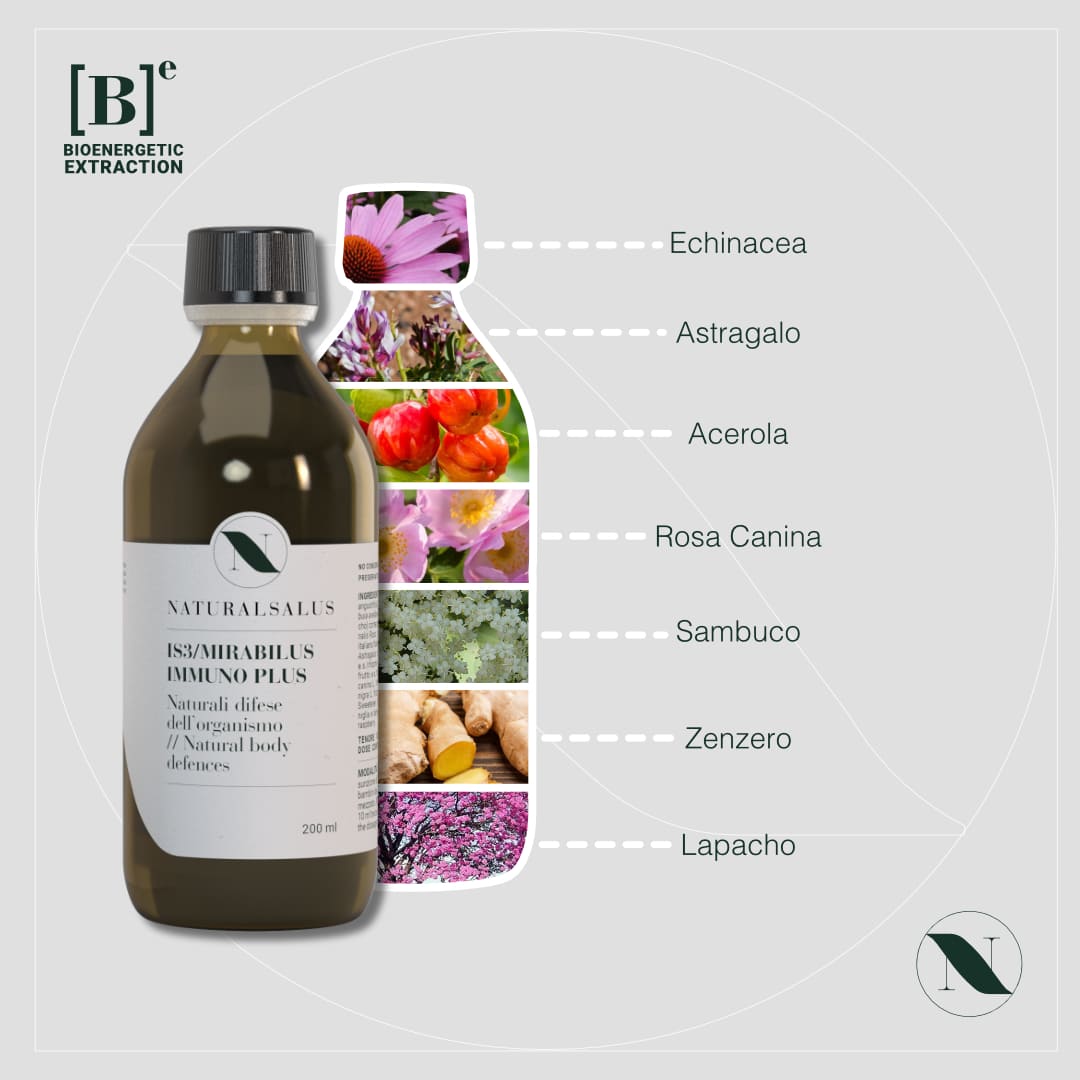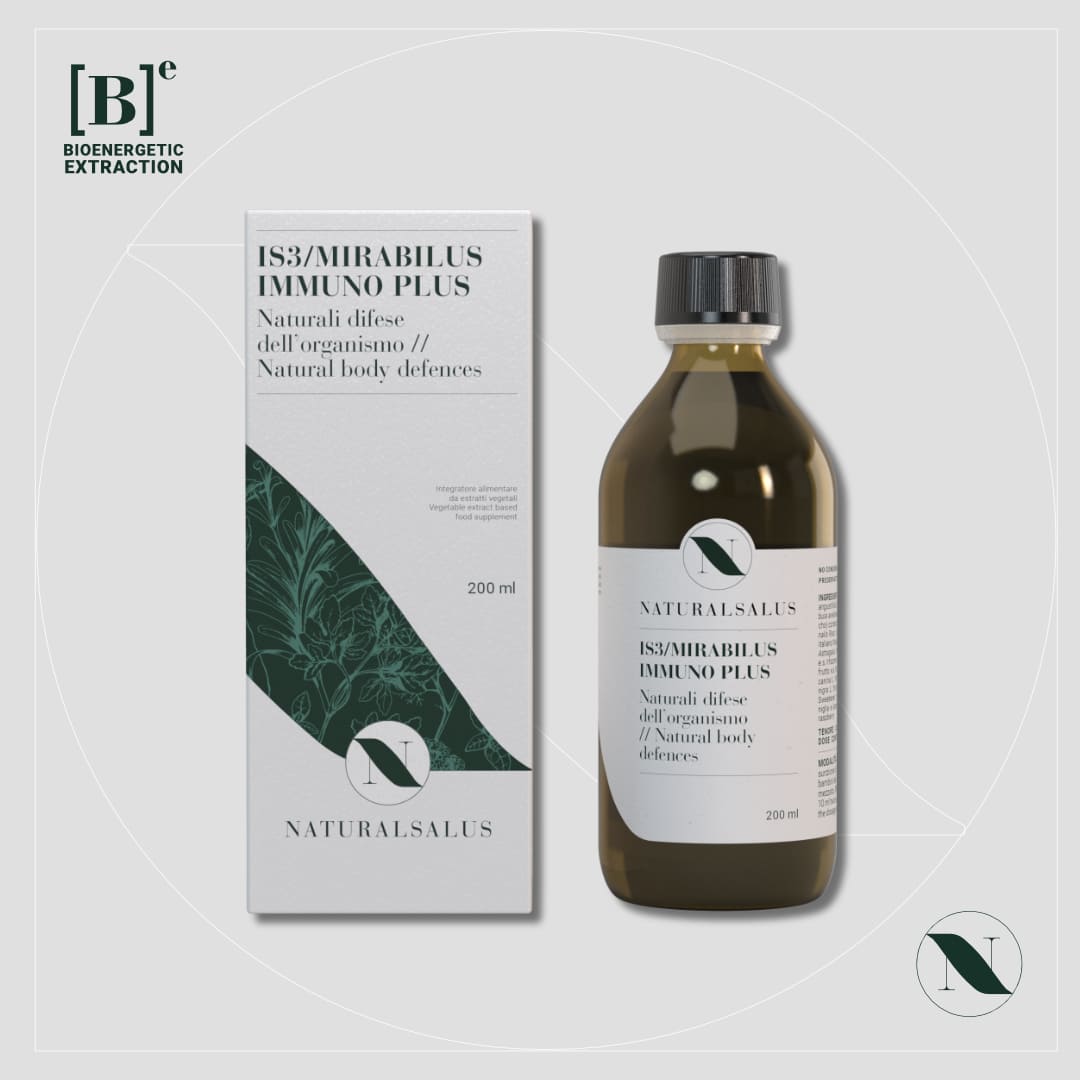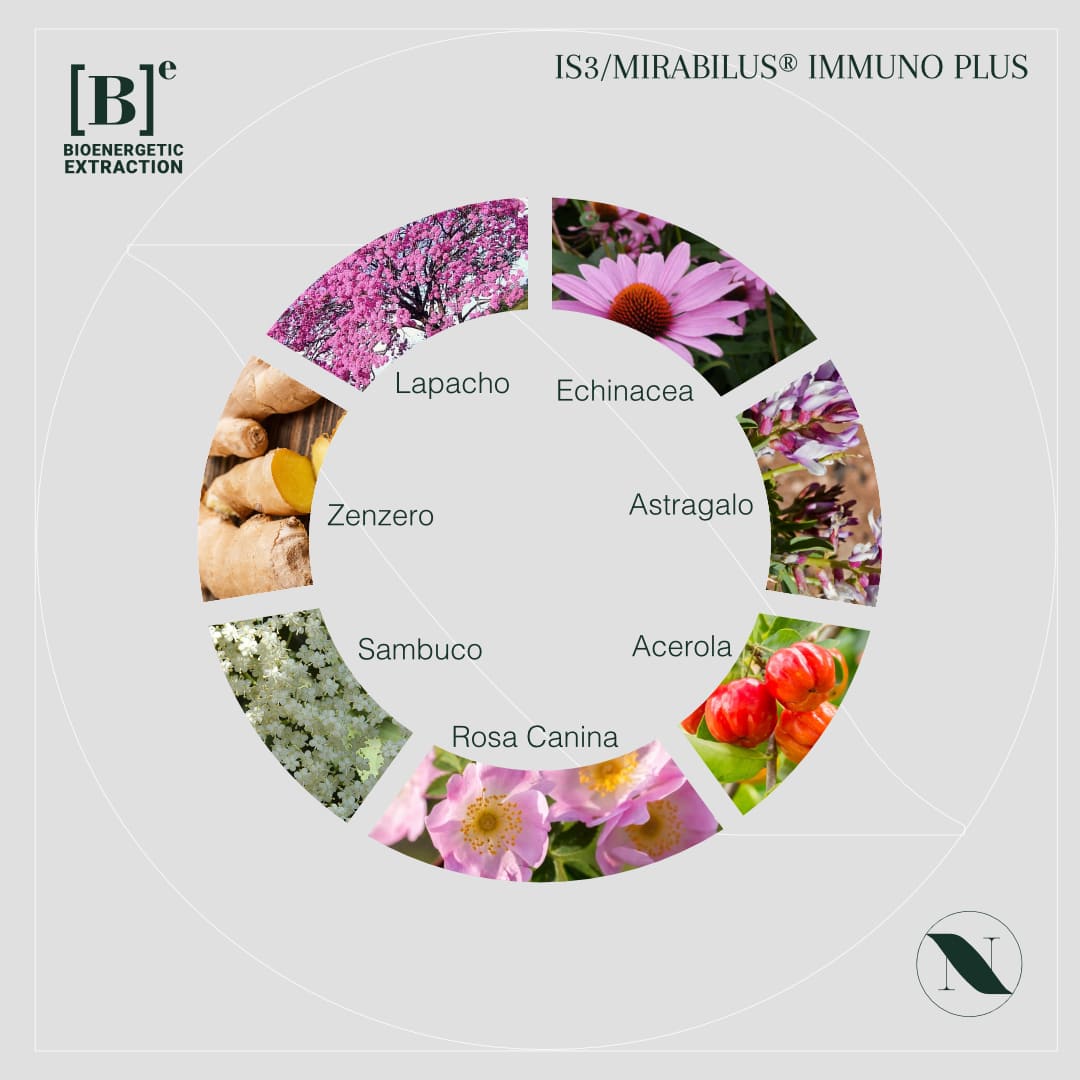

IS3/MIRABILUS® IMMUNO PLUS - Natural immune defences food supplement
Daily protection for the immune system – Strengthens defences and promotes general well-being
When the immune system is put under stress due to cold weather, seasonal changes or fatigue - the body becomes more susceptible to viruses and infections. IS3/MIRABILUS® IMMUNO PLUS by NATURALSALUS is an all-round phytotherapeutic supplement that strengthens the body's natural defences, supports the body at critical times and wards off seasonal ailments, especially those affecting the throat and respiratory tract.
The synergetic formula combines Echinacea, Astragalus, Acerola, Rosehip, Ginger, Elderberry and Lapacho paired with Italian honey and natural aromas. Plant extracts known for their immune-stimulating, antioxidant and antiviral properties - it is ideal for preventive and continuous use. Suitable also for children and sportspeople.




Explore other areas of wellbeing
Discover all our other products, organised by condition, benefit, stage of life or lifestyle, and find the natural supplements that best suit your needs.



